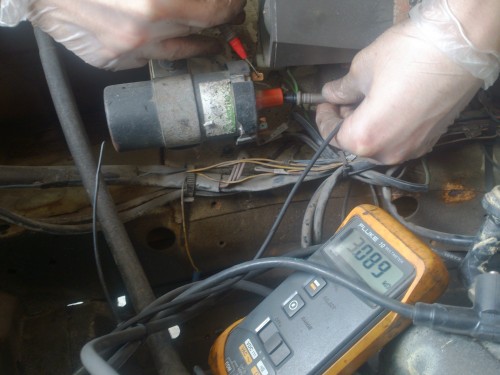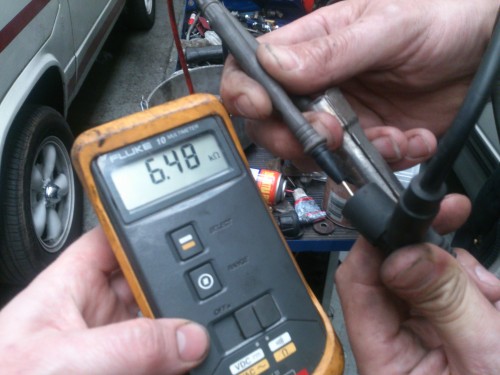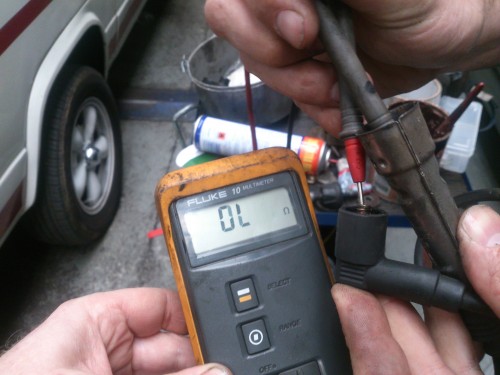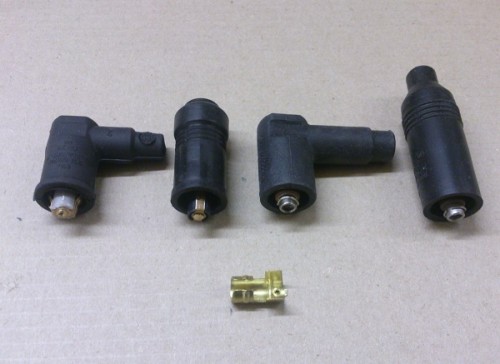On a VW T3, from the factory there were 4 different ignitions coils fitted throughout the production run, one of them was only used in some African countries on models fitted with points style ignition and are unlikely to see them here so they will be glossed over.
Early vans were air cooled, the 1.6l “CT” engine and the 2.0l “CU” engine, they used what we call the early coil, it had DIN connection for the king lead, when the WBX joined the ranks then they too used the early coil. In July 1984 they swapped from the early DIN coil to the later “sawtooth” style connection at Chassis number WV2 ZZZ 25 Z EH 155 001
The later coils as fitted to everything else, these could either have a green coloured label on them or a grey label. ETKA [VW’s Electronic Parts Catalogue] is a little confusing regarding what vehicles have the green and which have the grey label, in fact the information is contradictory.
It turns out that vehicles with a grey label on their ignition coil were for vehicles with extended service intervals, basically they could go longer between having a service and as such had different 3 earth electrode spark plugs.
We feel the best way to get the right coil is just to fit what was on there originally.
A faulty ignition coil could cause a few different problems, we find that they start to give flat spots while driving, this is usually a sign they are past their best. They can be checked with a multimeter set to ohms (more on that later).
An ignition coil is basically a step up transformer encased in steel (or laterly aluminium) and filled with oil, there are 2 circuits, a primary and a secondary, the primary is the low voltage side, the secondary is where the high voltage is induced. 12v is supplied to the primary circuit and around 35000v is induced in the secondary coil which is then fed via the king lead to the distributor cap where it is dished up to the correct cylinder.
The primary circuit, this is the low voltage side, the outer terminals on the body. One is marked “15”, this is ignition live [Black wire]. The other terminal is marked “1”, this is what’s called the tachometric signal, this is the switched earth supplied by your ignition module to turn the coil on and off [Green wire].
The secondary circuit is between terminals 1 and 4, the green wire terminal and the HT output to the distributor cap.
Obviously you disconnect the electrical connections from the coil before you get busy with your Ohmmeter as you want to measure the resistance of the coil and not the rest of the ignition system too!
The expected resistances are listed in the table below.
| VW No | Bosch No | Fitted to | Primary | Secondary | |||
| Early | 211 905 115 B | 0 221 122 023 | CT, CU, DF, DG | .52Ω to .76Ω | 2.4kΩ to 3.5kΩ | Up to | 24 E 155 000 |
| Late – Green label | 211 905 115 D | 0 221 122 349 | DF,DG,DH,GW,DJ,MV,SS,SR | .5Ω to .8Ω | 2.4kΩ to 3.5kΩ | From | 24 E 155 001 |
| Late – Grey label | 191 905 115 A/B/C | 0 221 122 399 | DF,DG,SP,DJ | .6Ω to .8Ω | 6.9kΩ to 8.5kΩ |

After testing, if you find the Ohms readings are out of specification then it’s time to change the coil, it’s as simple as that!



